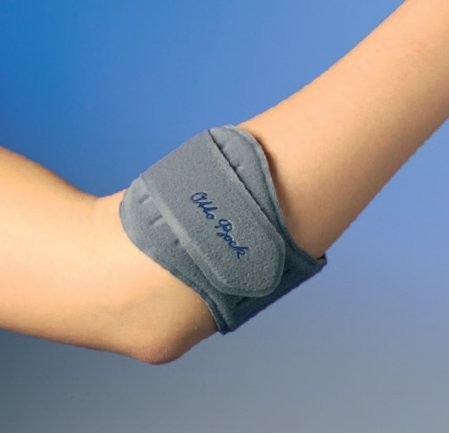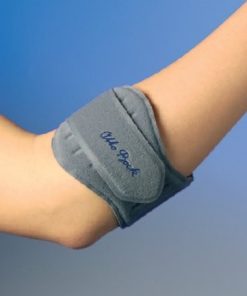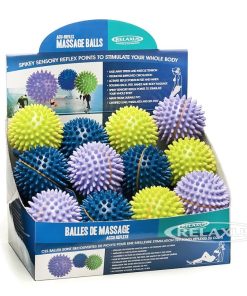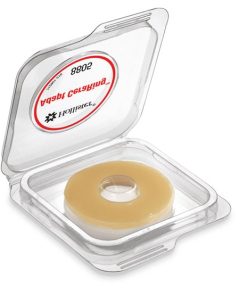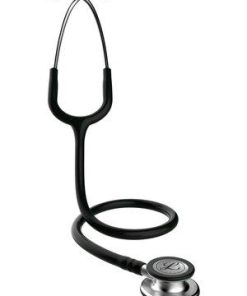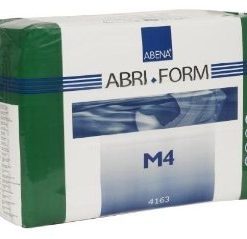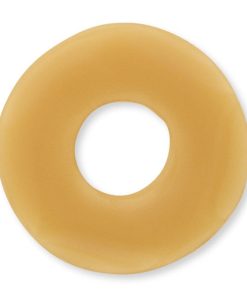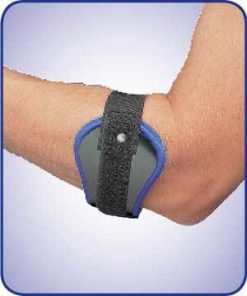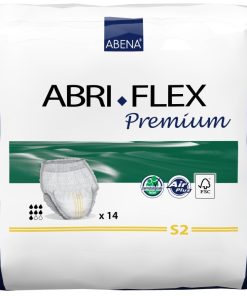Ottobock Epi Forsa Plus Elbow Ottobock
$ 81,99 $ 40,99
Stable Epicondylitis Orthosis – Epi Forsa Plus 50A3
At a Glance
- Precise, selected and adjustable compression of the forearm muscles
- Relief of irritated tendons
- Consistent, continuous pressure
The stable orthosis Epi Forsa Plus 50A3 is used to treat epicondylitis humeri radialis and epicondylitis humeri ulnaris. It is suitable for physical therapy after injuries or disease, and can also be used as a prophylactic orthosis for sports and everyday life.
Optimal Pressure Distribution due to Plastic Core Design
The Epi Forsa Plus, which comes in a universal size, has a stable, softly padded plastic core which prevents the orthosis from buckling and provides optimal pressure distribution. Due to the flexible insert strap, pressure can be continuously and dynamically controlled, and the pad makes targeted compression possible. The Epi Forsa Plus can be worn either on the left or right forearm with an easy change in pad position. Thanks to production technology, the orthosis is made without seams increases comfort, even at the edge of the orthosis.
A literature review of the treatment of epicondylitis lateralis with a circular lower arm orthosis showed that an orthosis such as the Epi Forsa Plus can pathophysiologically and biomechanically reduce neuromuscular activation and mechanical stress of the muscles normally affected in case of epicondylitis.
Pain Threshold is Increased for Passive Extension
Furthermore, the orthosis is able to increase the pain threshold for passive extension of the forearm musculature. Combining extension exercises and orthosis use can produce even better treatment outcomes.
Patients who are likely to benefit from a forearm orthosis can be identified with the help of the “Extensor Grip Test”. The forearm of the patient is enclosed with a firm grip a few centimeters distally of hand extensor origin. If the patient reports a marked improvement during dorsal extension of the hand against resistance, then treatment with the Epi Forsa Plus is very likely to be successful.
Indication
- Epicondylitis humeri radialis (tennis elbow)
- Epicondylitis humeri ulnaris (golfer elbow)
Univeral Sizing
Fast shipping and professional packing
Thanks to our longstanding association with UPS FedEx DHL, and other top international carriers, we are able to offer a variety shipping options. Our warehouse staff are highly educated to pack your items precisely according to the specifications we offer. Your goods are thoroughly checked and securely secured prior to shipment. Every day, we send thousands of packages to clients from all over the world. Our determination to be the biggest online retailer around the globe is evident by this. The warehouses and centers of distribution are in Europe, as well as the USA.
Note: Orders with more than one item are assigned a processing period depending on the item.
Prior to shipment, our team will perform an extensive inspection of the items you purchased. Most orders are now shipped within 48 hours. The expected delivery time will be between 3 and 7 days.
Returns
The stock market is always changing. It is not managed entirely by us, as we are involved with multiple entities, including the factory and our storage. So the actual stock may change at any time. Be aware that your order will become unfulfilled once you've placed your order.
The policy is for 30 days. We will not exchange or refund your order if it has been 30 days from the date of purchase.
You can only return a product when it's unopened and is in the same state as when you first received it. It should also be returned in its original packaging.
Related products
Continence Supplies
First Aid Supplies
Physiotherapy Supplies
First Aid Supplies
Continence Supplies
Physiotherapy Supplies
Aids for Daily Living
First Aid Supplies
Physiotherapy Supplies
Aids for Daily Living
Physiotherapy Supplies
AcuXP Mirco Dual Channel Muscle Stimulator Canadian Medical Supplies
Orthopedic Supplies
Ostomy Supplies
Diagnostic Equipment
Orthopedic Supplies
Continence Supplies
Ostomy Supplies
Ostomy Supplies
Ostomy Supplies
Shoes and Footcare
Walking Aids
First Aid Supplies
Orthopedic Supplies
Shoes and Footcare
Aids for Daily Living
Power Mobility
Pillows and Supports
First Aid Supplies
Ostomy Supplies
Continence Supplies
Ostomy Supplies
Physiotherapy Supplies
